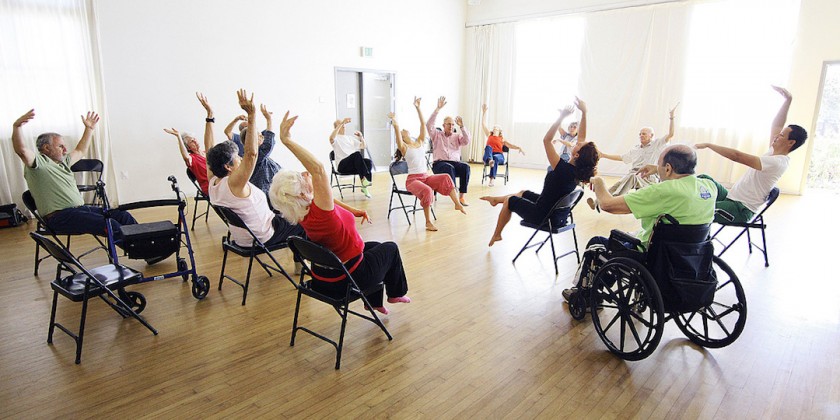Dancing Through Parkinson's, FREE Online Weekly Classes by Invertigo Dance Theatre

Company:
Invertigo Dance Theatre
Los Angeles–based professional dance company Invertigo Dance Theatre (Invertigo) is offering weekly live Dancing Through Parkinson's (DTP) classes via Zoom on Thursdays at 1:30 PT/3:30 CT/4:30 ET. Visit invertigodance.org/dancing-through-parkinsons for more information. For the past nine years, the company has offered free (donations accepted) weekly dance classes in studios throughout Southern California to people living with Parkinson’s.
The classes mirror the experience and progression of a professional dance class with movement executed from wheelchairs, walkers, chairs, or while standing. The curriculum is designed specifically to meet the needs of people with Parkinson’s disease from newly diagnosed to late stages. The series is equally beneficial for aging populations and anyone with a different neurological diagnosis.
The DTP online classes are modeled after the in-person studio classes. No dance experience is required to take part in the online or live classes. Teachers Kelsey Ang, Linda Berghoff, Heidi Buehler, Jess Evans, Haylee Nichele, and Rachel Whiting—representing the five different studio classes—each lead a segment featuring their unique styles and music selections. DTP participants move at their own pace, and every section of the class is designed with seated modifications for those who need to remain seated or who would like to take a break from standing. Classes are open to everyone; family and caregivers are also encouraged to participate.
Each session begins with a seated warm-up that incorporates breath work, upper body stretches, and joint mobility. Participants perform seated choreography, tap work, and muscular brain teasers. For the next section of the class, members progress into a modified ballet barre segment—either standing with a chair or sitting—and then move through standing or seated center traveling steps and enjoy some creative at-home improvisation. The class’s traditional end—a circle of gratitude—has been adapted into an individual hand-on-heart gesture, where all participants join in a collective breath of thanks for this opportunity to remain connected to community.



